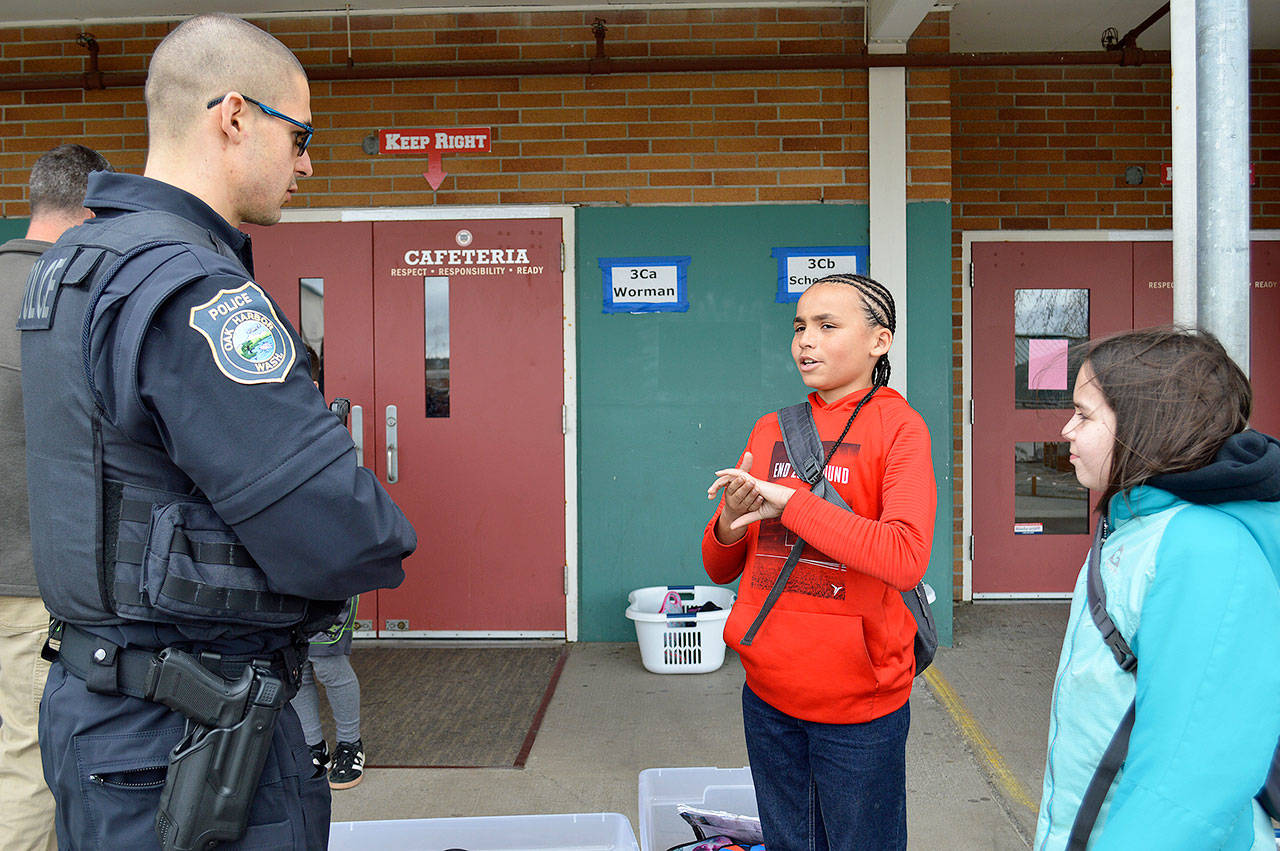Last week marked the 19th anniversary of the Columbine High School shooting. School safety is now as pertinent an issue as ever, with an average of 10 school shootings a year since the 1999 tragedy, according to an analysis by The Washington Post.
Though school shootings still make up a fraction of gun-related deaths every year, it’s still a priority for school districts and police departments across the country.
The Oak Harbor School Board recently received an overview of its school safety methods and protocols, which involve social/emotional support, law enforcement, facilities and communications.
“Every student needs to feel like they belong when they come to school,” Asst. Superintendent Steve King told the board.
These efforts include expanding the number of after-school clubs and activities students can participate in, making mental health counselors available and fostering positive relationships between students, parents and the staff. He said when those relationships are strong, students and parents are more likely to come forward and report something if an incident does occur.
Oak Harbor Police Department has also made it a priority to build positive relationships in the school, according to Capt. Bill Wilke.
The school resource officer, Nathan Padrta, is directly involved with the students and interacts with them in a variety of ways.
“He does a lot of mentoring and conducting presentations on youth-related issues,” Wilke said.
Padrta’s position is currently paid for by the police department, but Wilke and King said there are discussions about having the school district pay at least part of the salary of the resource officer in the future. Padrta talks to the students about safety and drug use, and is also meant to be a positive role model for them.
Wilke said he encourages all of his officers to engage in positive interactions with the kids.
He started what he calls “cop on a crosswalk,” which is exactly what it sounds like. He said in addition to the officers being able to monitor traffic and the safety of the students crossing, he and other officers are able to say hello and talk to them as they went to school.
“We can watch the kids smile, and it makes us smile too,” he said.
“It’s a good positive interaction for both of us.”
Padrta also prepares staff on procedures for events such as lockdowns.
Padtra helps lead tabletop exercises, in which school staff and emergency responders use a model of a school to visualize situations, such as an active shooter scenario.
“Preservation of life is our number one priority,” Wilke said in an email. “Our goal is to go into the school immediately to stop the threat and to rescue victims.”
He said officers are to take immediate action, while requesting assistance, if a suspect is actively engaged in life-threatening activity.
The department’s Regional Active Crisis Training Team is also involved in creating and administering crisis response training.
Inside the school, the signs that indicate visitors need to check in at the office and present safety procedures were recently updated and consolidated so that every school had the same instructions, said Brian Hunt, district facilities director.
He said video surveillance is in the process of being installed at every school.
The high school has 69 cameras that are wifi enabled, and the district is working with the police department to give live remote access to officers in emergency situations.
More fencing is being installed at North Whidbey Middle School and some were recently completed at Olympic View Elementary.
New magnets have been placed over the locks on doors, so in a lockdown they can be removed and lock the door more quickly than before.
Previously, staff had to go out into the hallway to lock some of the doors.
“A quick lockdown situation is a life-saving situation,” Hunt said.
This year, the district implemented a system to send emergency text messages to parents and staff. King said that next year administrators hope to add high school students to the list of recipients for the messages.
There is also an anonymous tip line students and parents can use through the district’s website or its mobile app.
“This isn’t something we’ve just started,” Hunt said at the meeting about the safety procedures.
“It’s just a continuous process. It’s advancing all the time.”
“No knee-jerk reactions here.”



